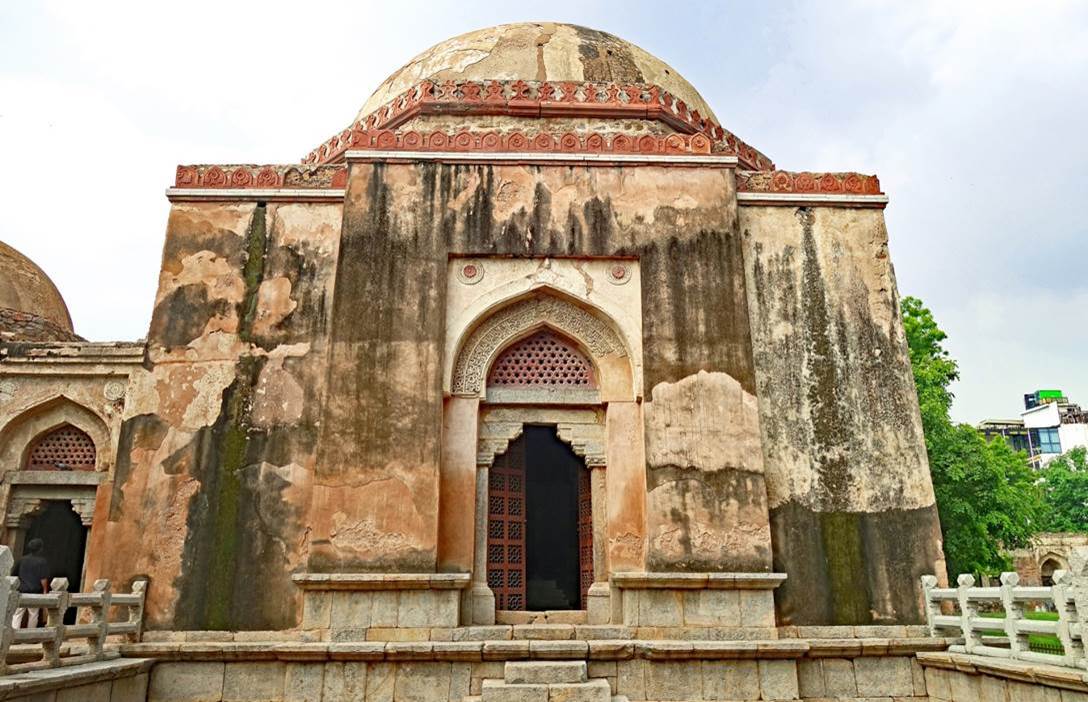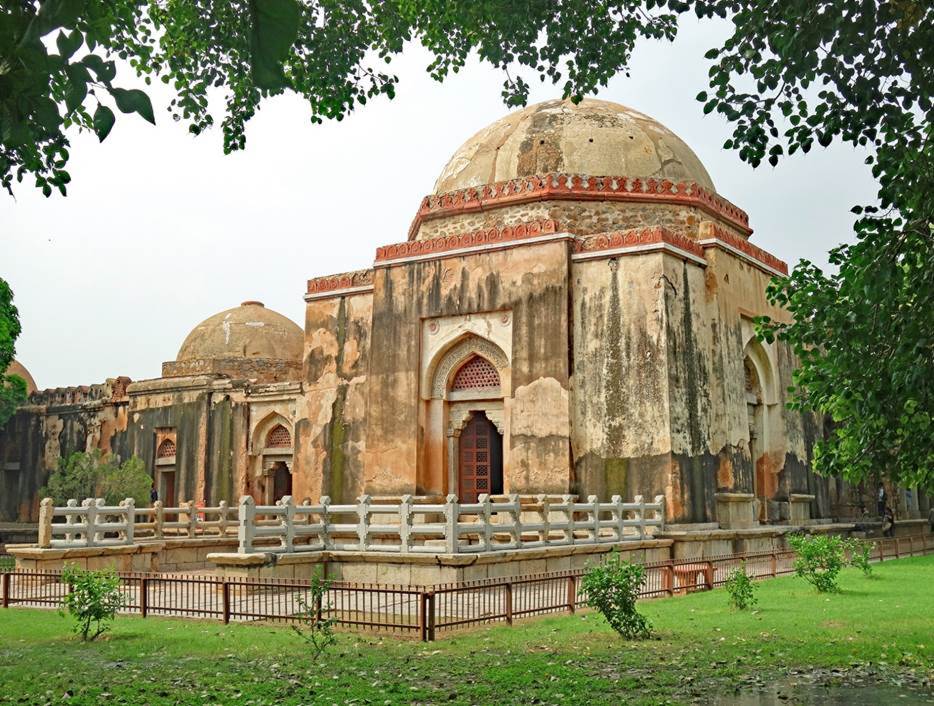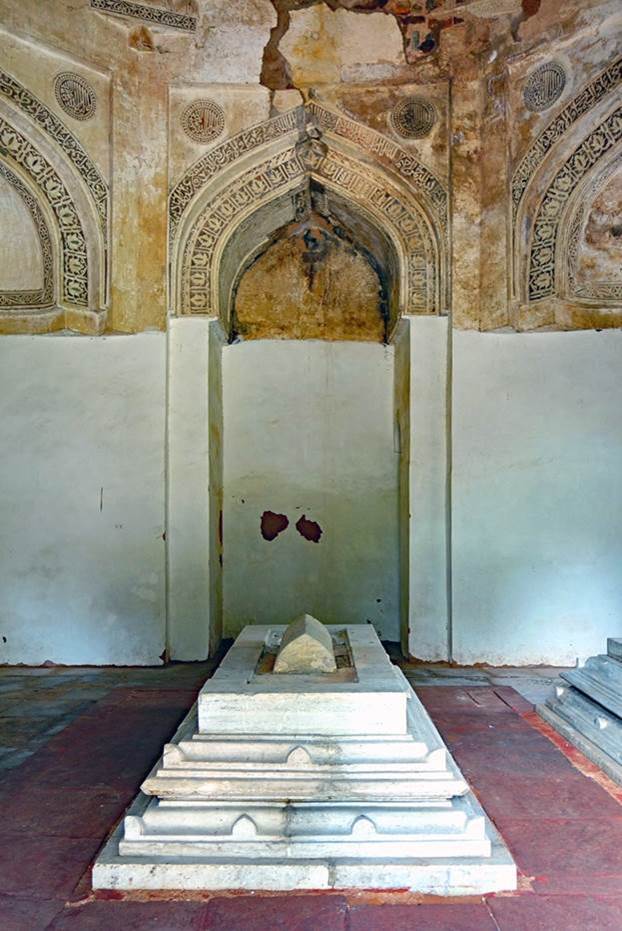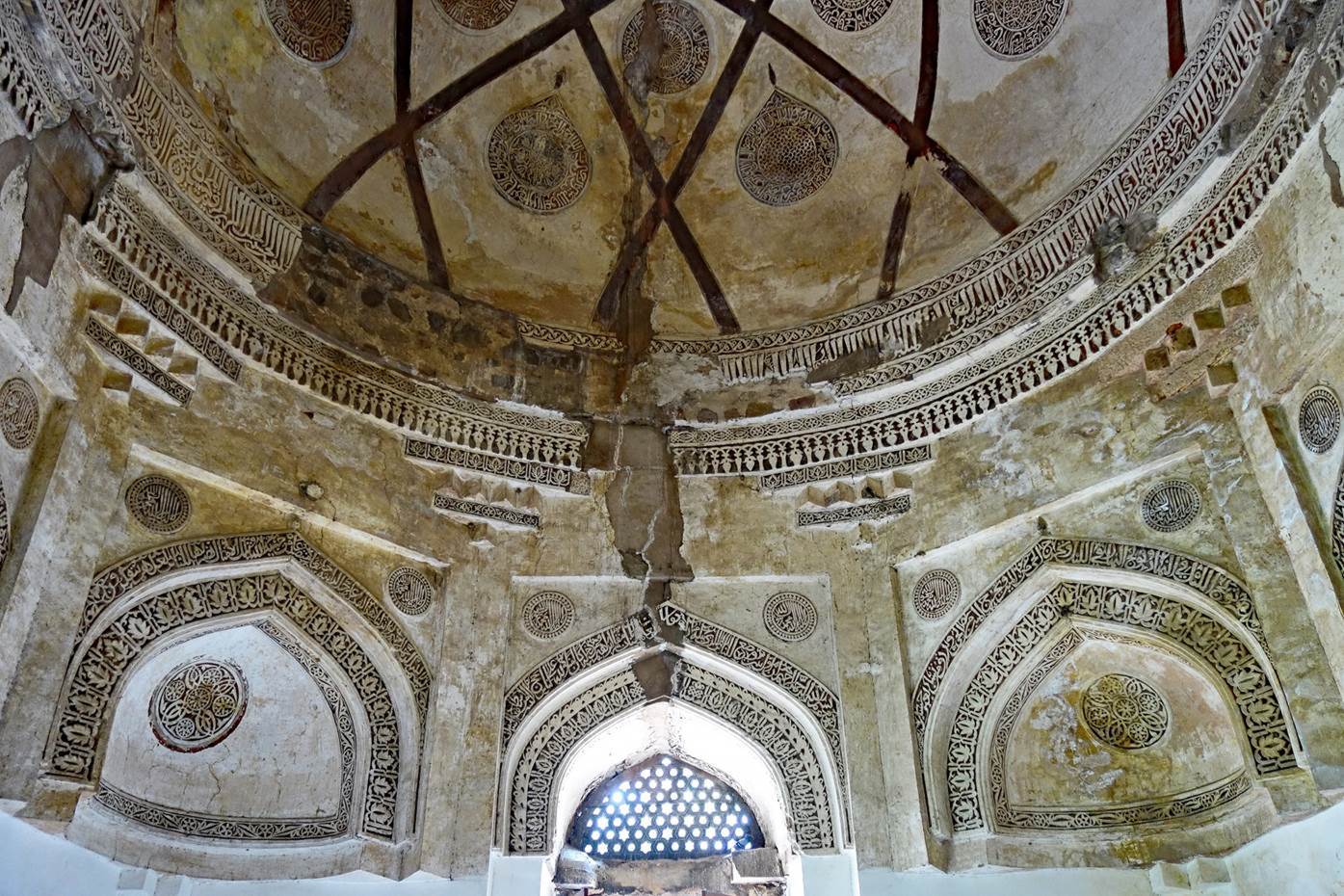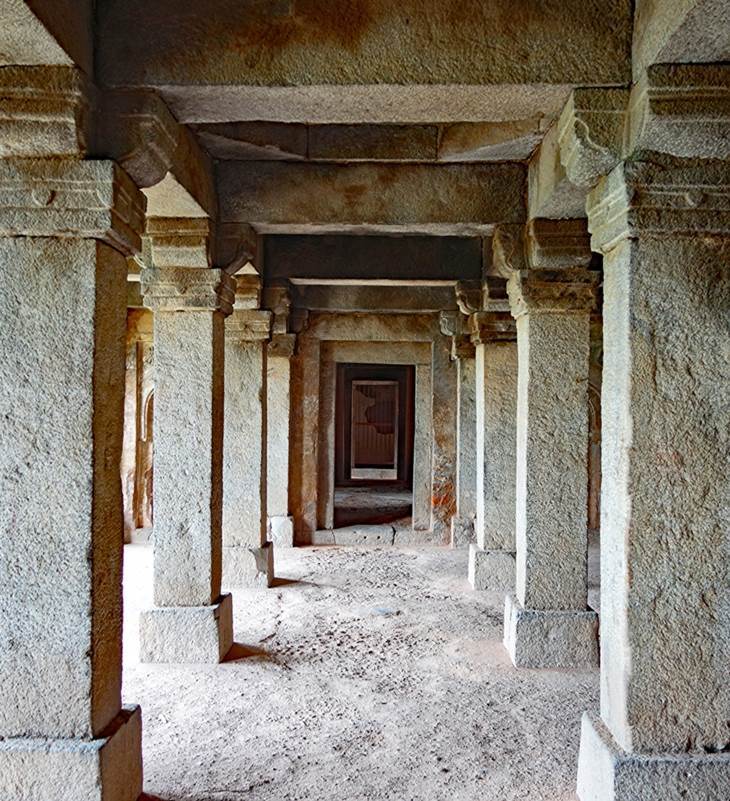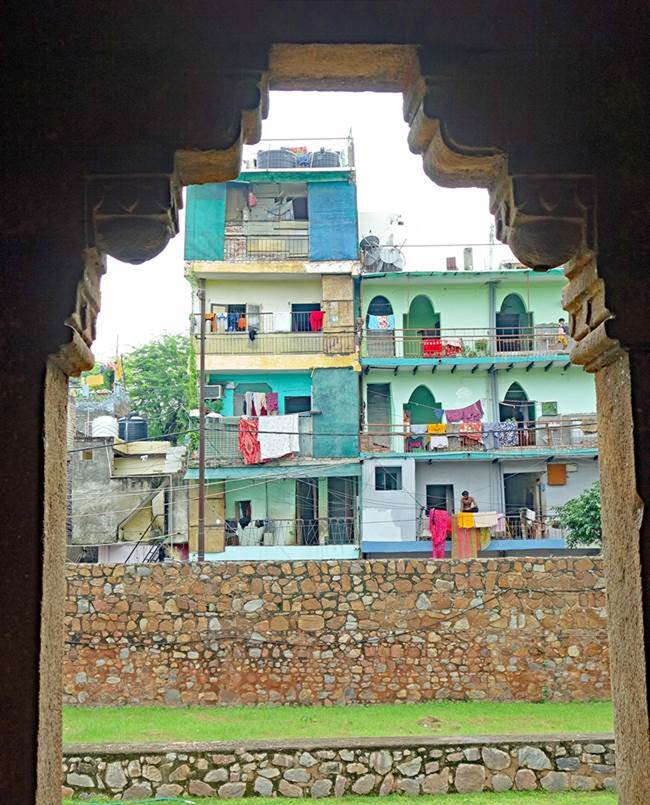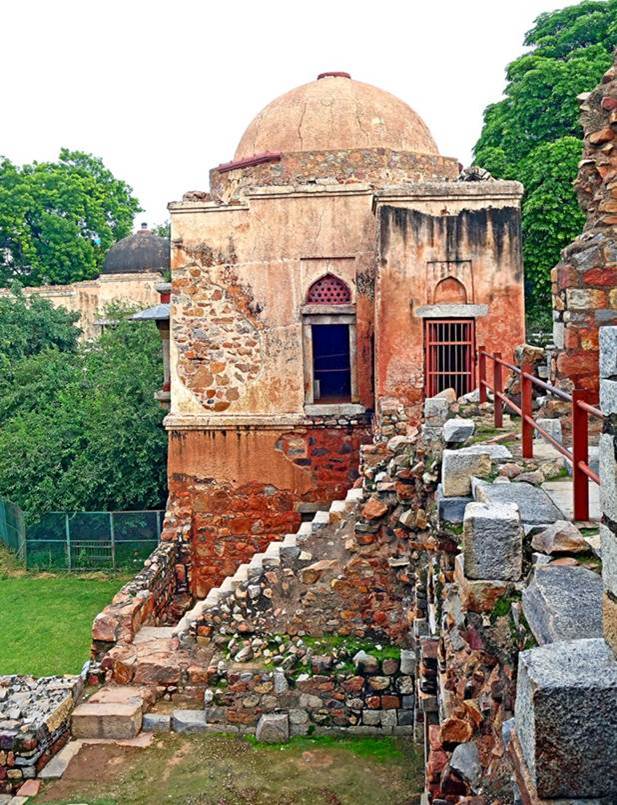New and
South Delhi, India (2013, 2016, 2018, 2019, and 2024)
|
|
Return to my mountaineering/trekking/travel webpage
Safdarjang′s Tomb, New Delhi (2019):
Built in the mid-18th
century this grandiose red and brown sandstone tomb is one of the last examples
of Mughal architecture.
|
|
|
|
|
|
Lodhi Gardens, New Delhi (2013 & 2016):
Tomb of Muhammad Shah
Sayyid, the last of the Sayyid dynasty rulers, built in 1444.
|
|
|


Bara Gumbad (″big
dome″) on the left and the three-dome mosque attached to it on the right,
believed to have been constructed around 1490.

Same two buildings seen
from the entrance portal of Sheesh Gumbad.

Facade of the three-dome
mosque of Bara Gumbad.

Inside the mosque.

Backside of the mosque of
Bara Gumbad.

Facing Bara Gumbad is
Sheesh Gumbad, a tomb of the Lodhi dynasty believed to have been constructed
between 1489 and 1517.


Tomb of Sikander Lodhi,
built in 1517-1518 by his son.


Hazrat Nizam-ud-din Dargah, New Delhi (2018):
This dargah (mausoleum) is dedicated to
Sufi saint Muhammad Nizam-ud-din Auliya (1238-1325) who preached a doctrine of
tolerance. The mausoleum is hidden in a small maze of narrow streets. After
crossing the unassuming entrance gate, it is reached through a chaotic series
of angular alleys and corridors. It is open at all time, so that people may
spend the night there to pray, find some respite, and/or sleep. Some medical
care (probably free) is also provided to people in need within the compound.
I went to this place around 7am.
Although there was not a large number of people, the mystical atmosphere around
the mausoleum was overwhelming. Some people were chanting, some reading, others
sleeping. Although the place may at first be a bit intimidating for a solo
visitor like me, people were friendly or neutral and peaceful. Of all the
places I have visited in Delhi, this is the most memorable one.
The streets around the dargah are filled
with eateries and stalls with vendors selling roses, incense, perfumes, and
clothes.


|
|
|
|
|
|
|



Past the entrance gate, a corridor leads
toward the mausoleum of Nizam-ud-din around a crumbling basin that was empty at
the time of my visit.

One last shop next to the dargah.

Around the dargah.






|
|
|
|
Humayun‛s Tomb, New Delhi (2013 & 2018):
The building
containing the tomb of Mughal emperor Humayun was constructed in the mid-16th
century. It is said to have inspired the Taj Mahal, which it predates by 60
years. Commissioned by the emperor′s first wife, Persian-born Bega (Haji)
Begum, it was designed by two Persian architects picked by her, Mirak Mirza
Ghiyas and his son Sayyid Muhammad. The building also contains the tombs of
empress Bega Begum and several other subsequent Mughal emperors. Its gorgeous
facade combines white marble and red sandstone.
I visited
this site twice, in 2013 (with a guide) and again in 2018 (alone). As it is
open from dawn to dusk, in 2018 I went early in the morning before crowds of
people flock into it and I spent more time than in 2013 admiring the building′s
perfect geometry and proportion. Personally, I consider Humayun‛s Tomb
more beautiful and inspiring that the Taj Mahal, which I had visited in 2001.
(2013)
Building containing the tomb of Mughal emperor Humayun.

(2018) Other
views of the building stressing its sublime geometry.









Tomb of Isa Khan Niyazi, New Delhi
(2013 & 2018):
This tomb is
located near Humayun‛s tomb. It was constructed in 1547, more than
20 years before Humayun‛s tomb. Isa Khan Niyazi was an Afghan noble
in the court of Sher Shah Suri, a Pashto who founded the Sur Empire in northern
India. The tomb is a beautiful example of Lodhi-era architecture.
Photos taken
in 2013.
|
|
|
Photos taken in 2018. Tilework, mainly
on the cupolas, was restored in 2014, between my two visits.
|
|
|



|
|
|
Tombs inside the building, including the
one of Isa Khan Niyazi.

Three-bay mosque located in the same
enclosure as the tomb of Isa Khan Niyazi, with a striking red sandstone central
bay.

World Buddhist Center, East of Kailash, New Delhi (2019):
This center
was founded in 1996 by Bhikshu Gyomyo Nakamura, a Japanese monk, who also built
the Shanti stupa in Leh. In 2019 I stayed at the peaceful guesthouse of this
center.


Qutur Minar Complex, South Delhi (2013):
The main
building in the complex is the 73-meter Qutur Minar (minaret), whose diameter
decreases from 14.3m at the base to 2.7m at the top. Built during the late 12th
and early 13th centuries by Qutb-ud-din Aibak (a former slave), the first
sultan of the Mamluk dynasty, it is the tallest brick minaret in the world.
|
|
|
|
|
|
|
Arch, iron
pillar (black, only visible in the first photo below, 7.2-high, 1600-year old),
and stone pillared halls in the complex.

|
|
|
|
|
|
|

Ala′i Minar. After a victorious
campaign, Sultan Ala-ud-din Khalji dreamed to build a minaret similar to Qutub
Minar, but twice as high. However, at his death in 1316, the minaret had only
reached 27m in height and none of his successors dared pursuing this over-ambitious
project.

Rajon Ki Baoli, Mehrauli Archeological Park, South Delhi (2019):
Baolis are stepwells, often
multi-storied structures, found in arid regions of southern Asia. They fill up
during the rainy season. Later, as the water level goes down, the water remains
reachable by descending the steps. There are several old baolis in Delhi, among
which the Rajon Ki baoli is the most elaborate. It was built in the early 16th
century during the Lodi dynasty. It is a U-shaped, four-storied structure with
a broad staircase on the open side of the U. When I visited in August, the
lower two stories were under twater.




Tughlaqabad Fort, South Delhi (2019):
This ruined fort was built in the 14th
century during the reign of Ghiyas-ud-din Tughlaq, the founder of the
Tughlaq dynasty. The fort covers a huge area, some parts of which are homes of
nasty monkeys and mean dogs. I visited the fort on August 15, the Indian
National Day. I was the only visitor. Fortunately, a guard at the entrance gate
came with me with a big stick.
Entrance of the fort. Monkeys seem to be
waiting there for visitors. Though they may occasionally look cute, they are
often aggressive.
|
|
|
Some of the massive bastions of the
fort.

Ruined structures inside the fort.

Baoli inside the fort.
|
|
|
Tomb that Ghiyas-ud-din Tughlaq, the
founder of the Tughlaq dynasty, built for himself in 14th century,
slightly outside the fort. The pentagonal building is made of red sandstone and
is covered by a white-marble dome on an octagonal platform.
|
|
|
Hauz Khas Complex, South Delhi (2024):
This complex consists of
several structures dating from the 13th century (Delhi Sultanate), including
the Firuz Shah Tughlaq's tomb, a two-wing madrassa, a mosque, multiple
pavilions, and a reservoir. It is located next to the Hauz
Khas village.
A member of the Tughlaq
dynasty, Firuz Shah (1309-1388) reigned over the Delhi Sultanate for 37 years.
He built his tomb at the same time as the adjacent two-wing madrassa. This
tomb, shown in the two photos below, is a massive square building measuring 13.5mx13.5m,
topped by a large dome dominating the entire complex. It stands at the junction
of the perpendicular west and north wings of the madrassa. The west wing is
partially visible in the two photos below, on the left of the tomb.
|
|
|
Interior of the tomb building: cenotaph of Firuz Shah (left photo) and
plaster decoration (right and following photo).
|
|
|
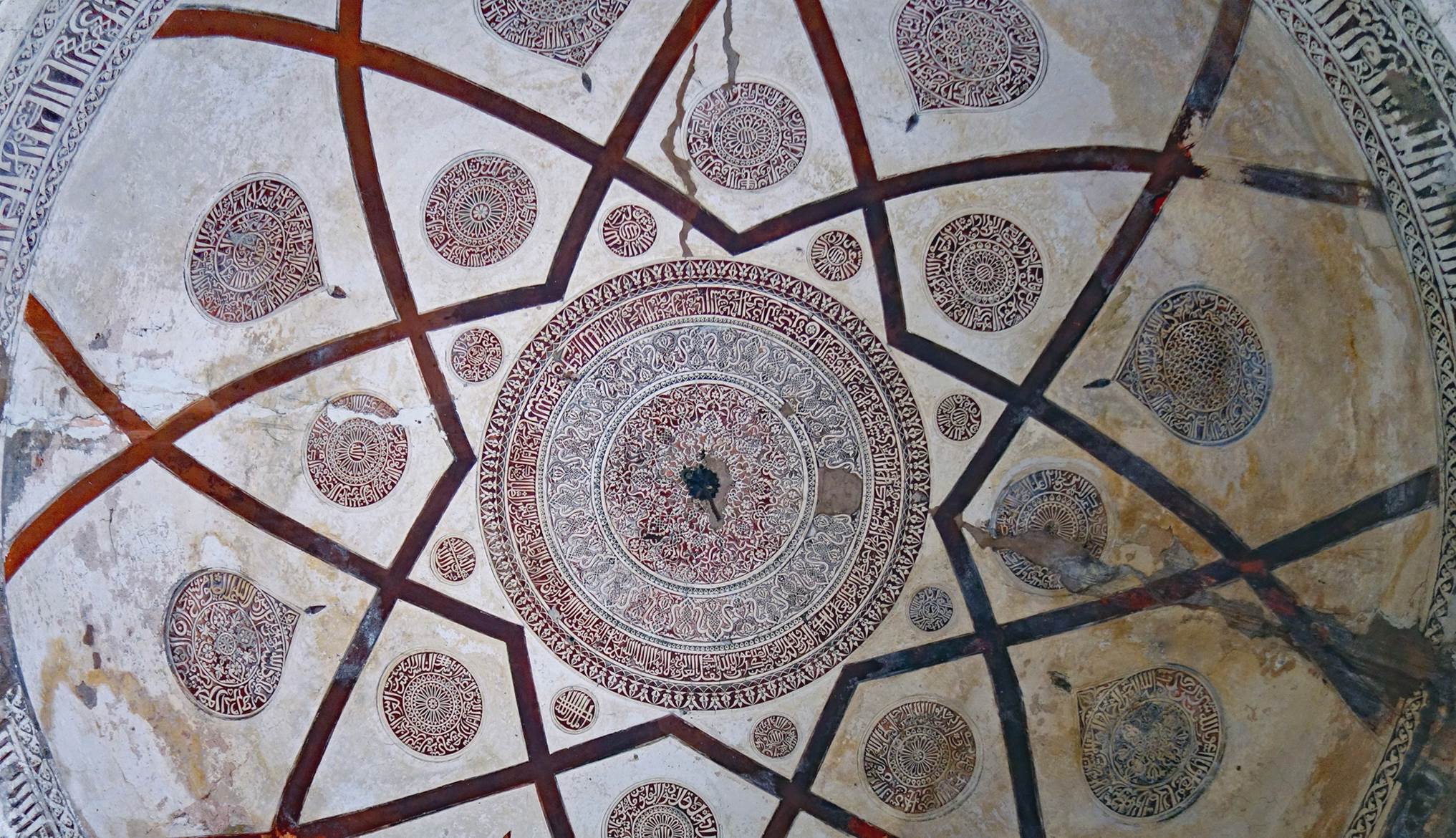
Left: Interior of the
west wing of the madrassa, with its rows of square stone pillars. Center: Modern
house of the Hauz Khas village seen through an opening in the south wall of the
west wing of the madrassa. Right: End (westmost) narrow facade of the west wing
of the madrassa, with stairs leading to the reservoir.
|
|
|
|
The reservoir seen from the west wing of the madrassa. It was built
before the madrassa, during the reign of Alauddin Khalji (1296-1316).
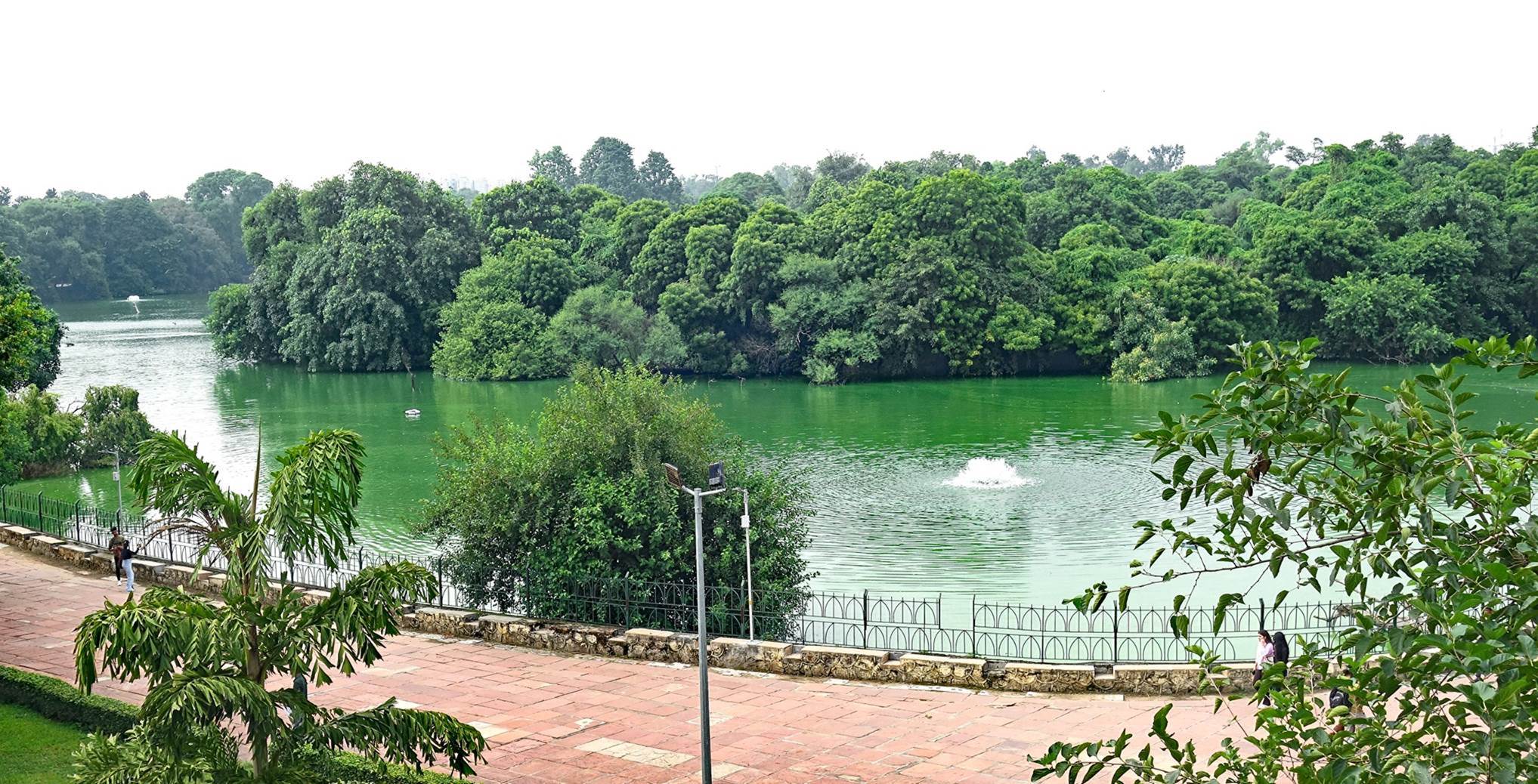
T-shaped three-domed building in the complex.
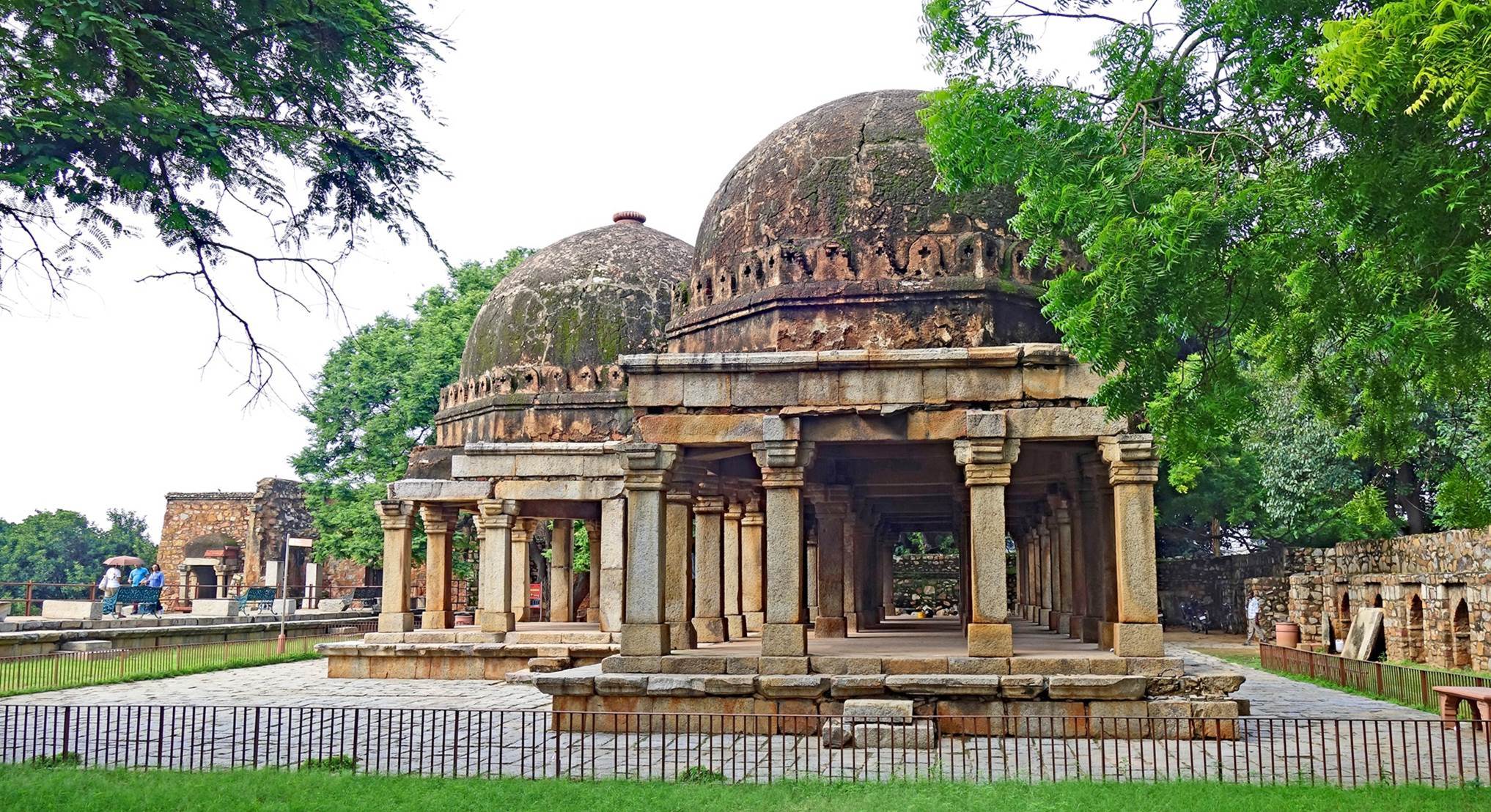
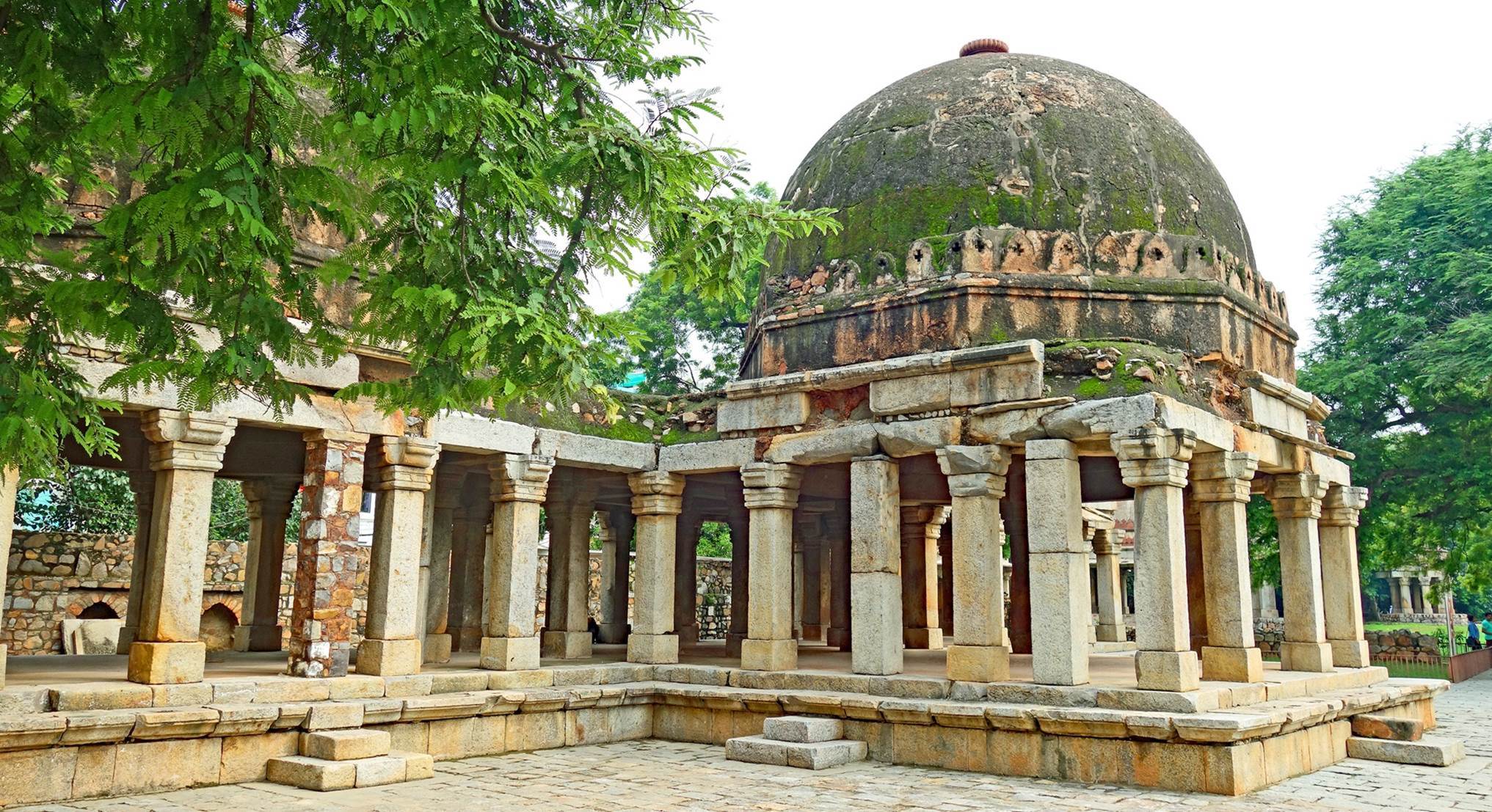
Domed pavilions.
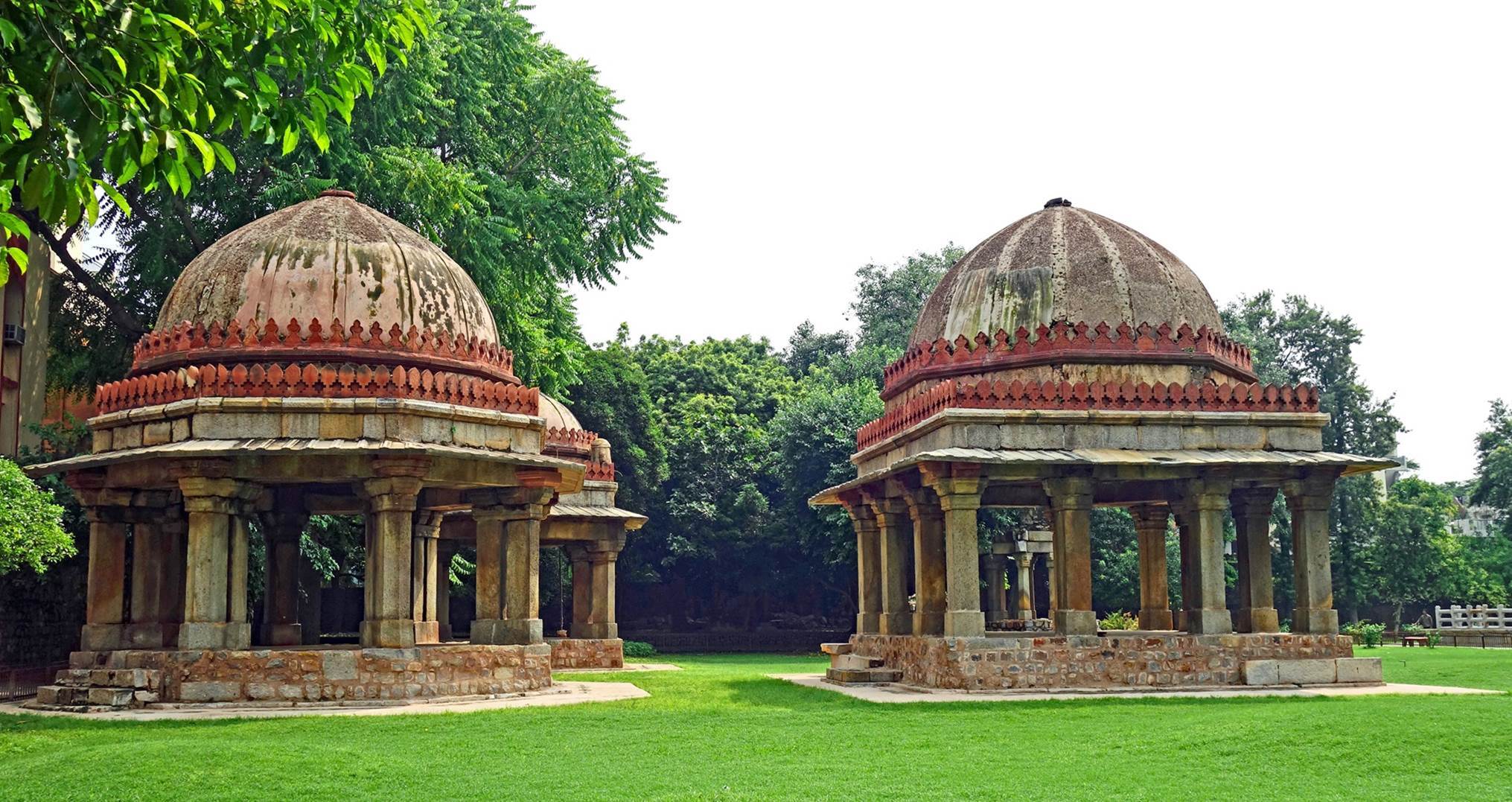
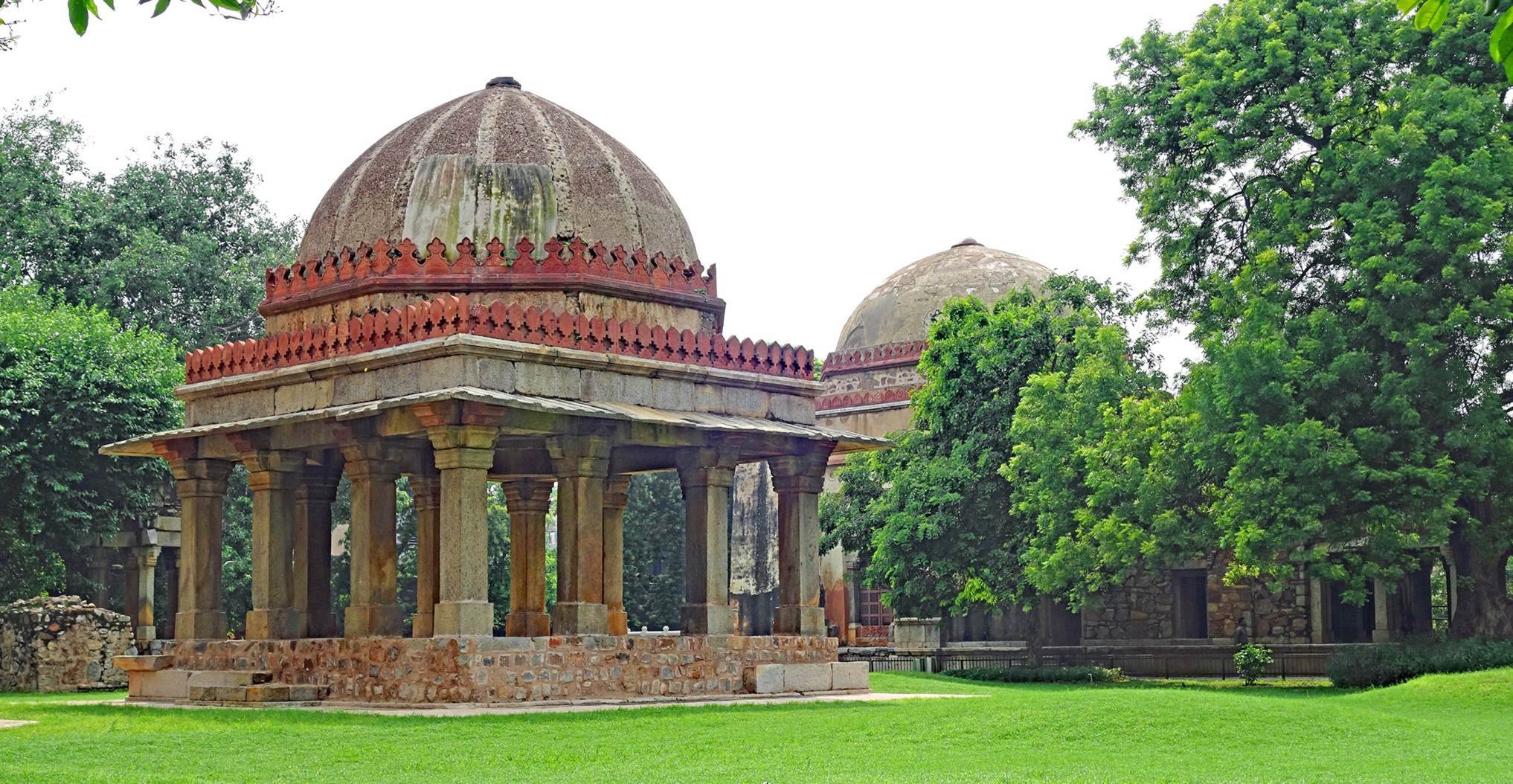
Pavilions seen against the background of modern buildings of the Hauz Khas village.
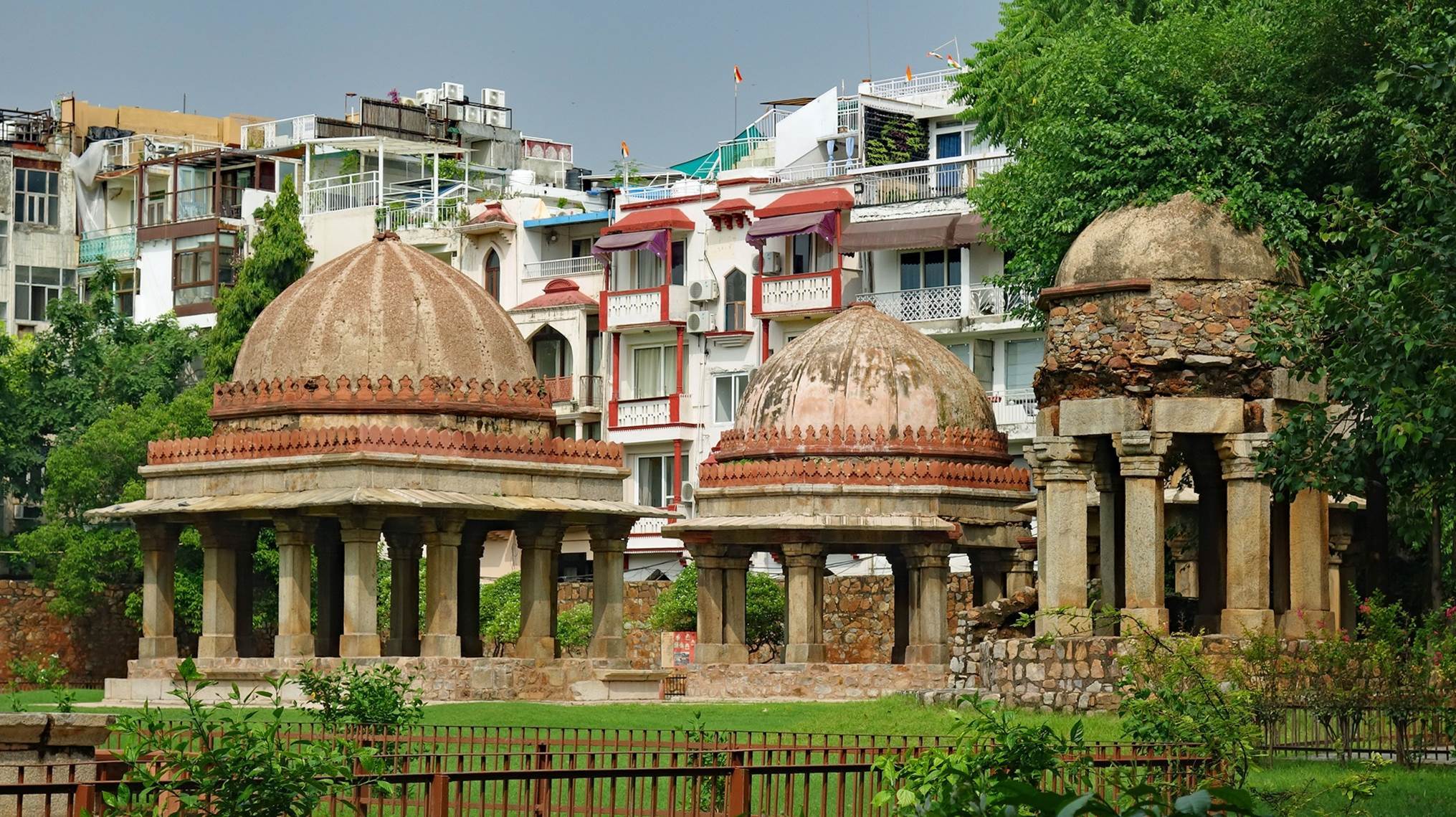
Pavilions with the Firuz Shah Tughlaq's tomb in the background.
.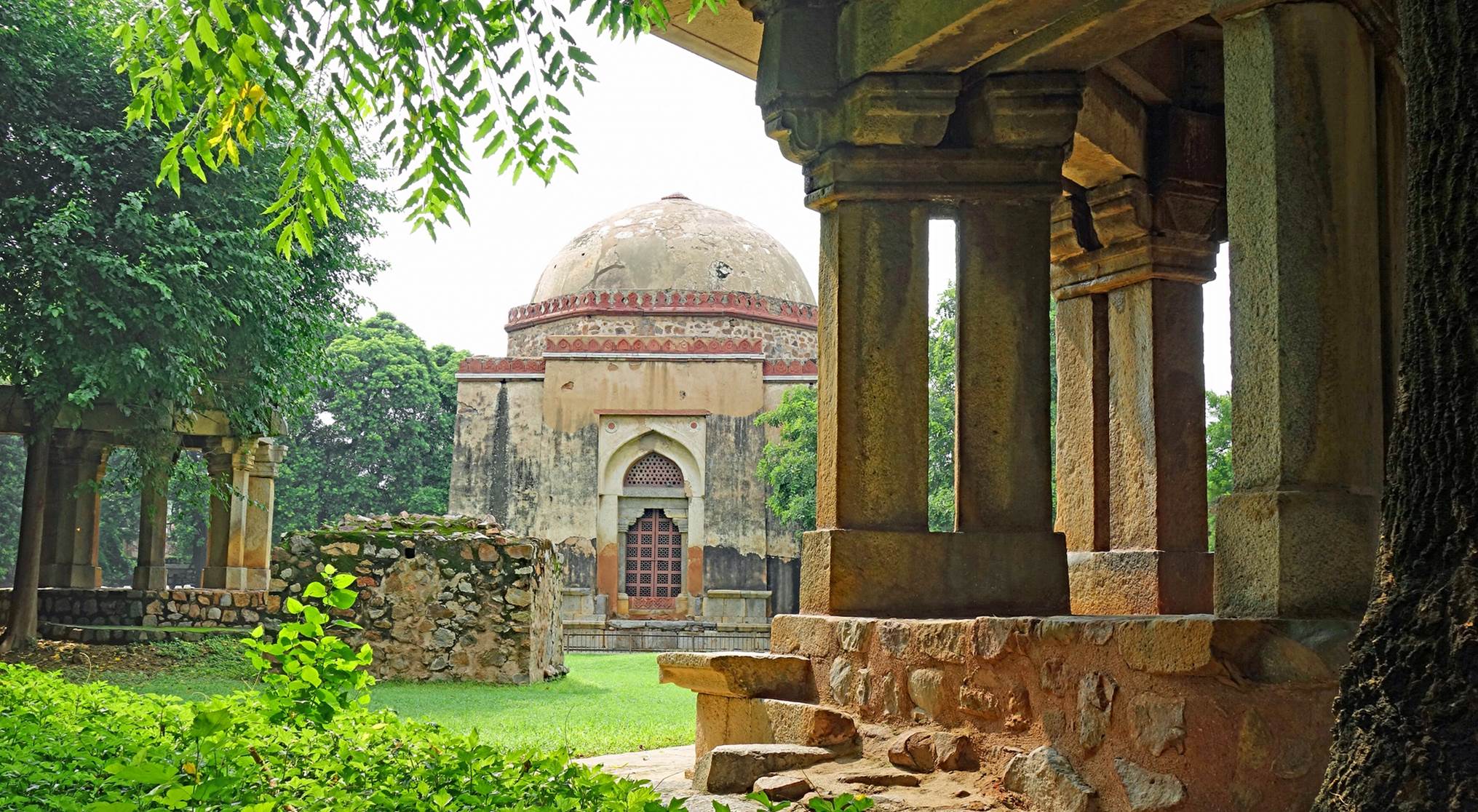
Part of a circular band of plaster calligraphy incised in a pavilion.
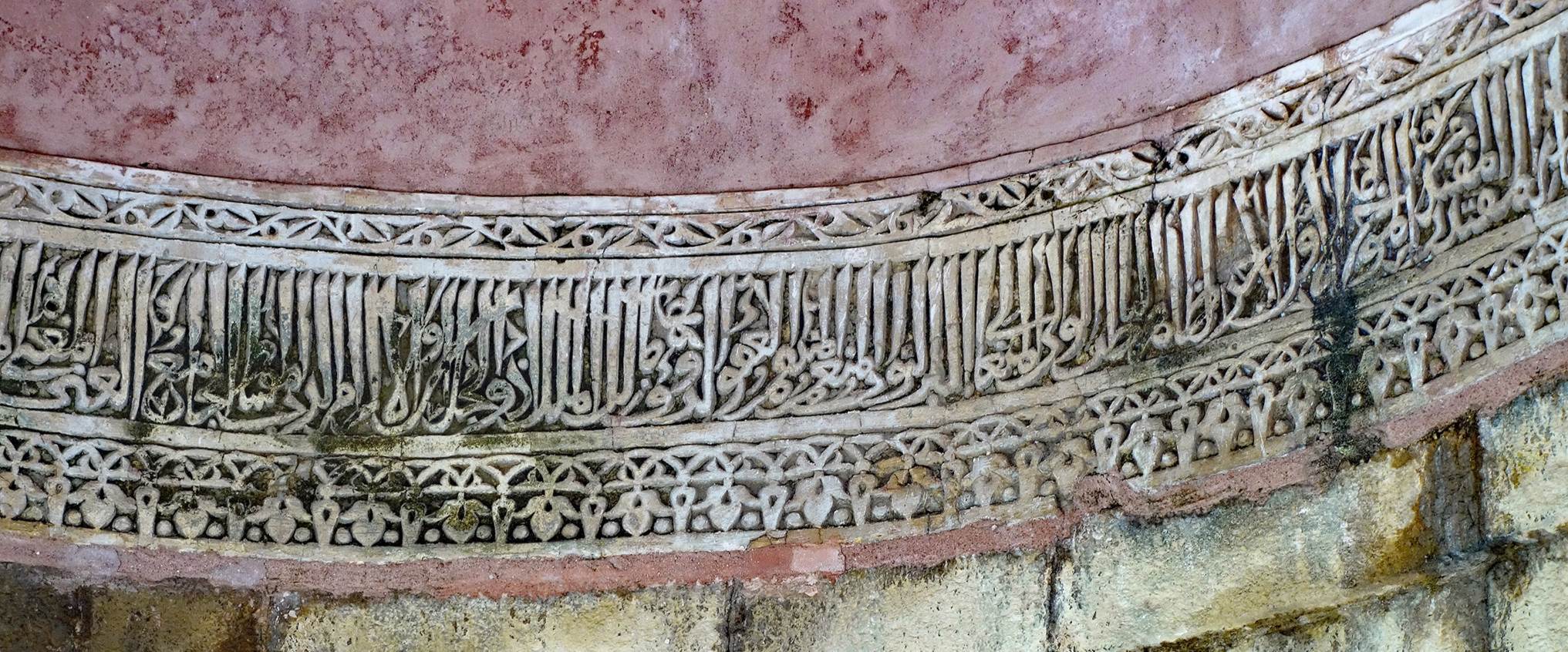
![]()




































